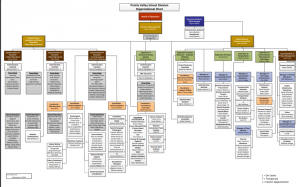This post is part of a series inspired by the #IMMOOC book study of Katie Martin’s book, Learner-Centered Innovation.
When I listened to the first YouTube Live broadcast with Katie Martin, George Couros, and A.J. Juliani two weeks ago, it made me consider two things: compliance and creativity in kindergarten, and fighting trained compliance in middle years students.
Teaching kindergarten is a balancing act on so many levels. Little self-centred human beings enter your classroom every September, and you have to mold them into a community of learners who share, take turns, and take care of each other, while still honouring them as individuals. I’ve often thought this requires teaching a certain amount of compliance: When is it time to sit and listen to others? How do we indicate that we have something to say and want a turn? How are our personal and shared supplies stored and cared for? In Learner-Centered Innovation, Katie Martin described her daughter’s third-grade teacher commenting that she doesn’t “have a lot of rules and consequences. I respect students, and I hope they respect me.” This comment re-framed how I think of my classroom. I believe any success I have building community with my kindergarten students is firmly rooted in respect, not compliance.
One of the great pleasures of teaching kindergarten is that it is a play-based program. A confident teacher is able to build on interests and ideas of students in order to reinforce the wide array of skills and outcomes required in the kindergarten curriculum. As I gain more experience teaching at this age level, I find myself steering away from the “cute” Pinterest-type activities that I direct and manage, to letting students guide me with their interests and needs. Katie Martin describes in Learner-Centered Innovation that “educators who are providing learner-centered experiences have prioritized the learners’ and aligned learning experiences to meet and develop the desires, knowledge, skills, and mindsets.” Through the play-as-work model, kindergarten students are in many ways the greatest producers of learning in the school system, as they work their way through questions and problems every day.
On my non-kindergarten days, I’m a middle years teacher (teaching in a small school provides the privilege of teaching a wide range of ages and subjects). The difference between five and 13 year olds can be stark! My grade 7/8s are definitely less likely to take risks in their learning, and they’re definitely more likely to want to know exactly what the expectations of the assignment are, so they can do exactly that much. Their light for questioning and inquiry seems to be almost extinguished by years of compliance, so that even when they are given the opportunity to participate in learner-centered experiences, they express that they’d really rather not because it seems like a lot of work. As one grade 8 student said to me this year at the onset of an inquiry project, “Don’t you know the answers to these questions so you can just tell us?” Where the five year olds are producers of learning, the middle years students are consumers of something they’ve been trained to call learning.
One of the big “a-ha moments” in my career was moving into the role of kindergarten teacher after years spent in middle years, and wondering how the joy and naturalness of learning found in five year-olds could be replicated in older students. Of course the answer is to stay focused on the learner, to keep that sense of play and discovery, and to create conditions for students to have ownership of their own learning. Our goal as educators should always be to encourage producers, not consumers.




